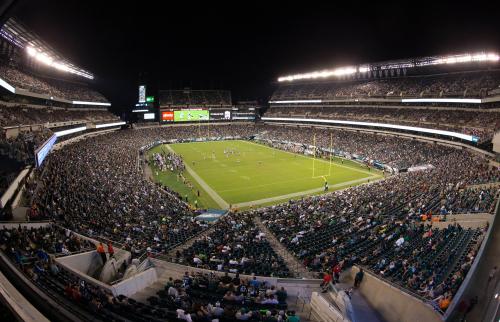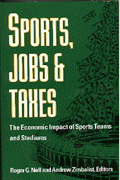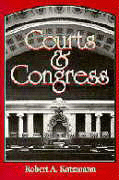Now that the Senate’s tax reform legislation has been approved, the differences between the House and Senate bills need to be reconciled in a conference committee. As Representative Mark Walker (R-NC), who leads the Republican Study Committee, said, “We’re going to have to fix things, but we’ve got to get this done.” Much of the “fixing,” will entail reconciling big policy differences, such as changes to the Alternative Minimum Tax, the brackets for the individual income tax, and the treatment of pass-through income.
But there’s one difference between the House and Senate bills that deserves more attention: the treatment of the federal tax subsidy for private sports stadiums. Current tax law allows stadiums subsidized by local governments to be financed by tax-exempt municipal bonds. The interest earned on these municipal bonds is exempt from federal taxation, translating into a tax subsidy for private sports stadiums.
Despite having a relatively small effect on revenue, the provision in the House bill that ends this subsidy is an opportunity to correct a policy that misuses taxpayer money.
Despite having a relatively small effect on revenue, the provision in the House bill that ends this subsidy is an opportunity to correct a policy that misuses taxpayer money. How much do federal taxpayers subsidize these private stadiums? According to our research, over a 15-year period starting in 2000, 36 professional sports stadiums across the four major U.S. sports leagues (NFL, MLB, NBA, and NHL) have been subsidized by the federal government through tax-exempt bonds to the tune of $3.2 billion.
In our research, we argue that the most direct way to eliminate the practice of stadiums receiving federal money is for Congress to eliminate what’s known as the “private payment test” for stadiums. By doing so, any stadium used primarily for “private business use” would no longer be eligible to receive federal tax-exempt financing.
Following publication of our work, there were proposals by Representative Steve Russell (R-OK) and then by Senators Booker (D-NJ) and Lankford (R-OK) to eliminate the subsidy in a similar manner to the one proposed in our research. The tax reform legislation that passed the House in November included a provision that forbids professional stadiums from being financed with tax-exempt bonds, but the legislation passed by the Senate in early December did not.
Given that our estimates of the revenue effects from the subsidy are small within the context of the $1.5 trillion total tax cut voted on the by Senate, it’s not surprising that this subtle difference between the House and Senate bills would fall under the radar. But our argument is that the size of the subsidy is somewhat immaterial: Subsidizing lucrative sports franchises is a misuse of taxpayer money.
Even if you think sports stadiums help local communities (which academic economists overwhelming agree they do not), there is no economic justification for federal subsidies for such stadiums. Residents of, say, Wyoming, Maine, or Alaska have nothing to gain from the Raiders relocating from Oakland to Las Vegas.
As the House and Senate work to finalize the tax reform legislation, this is an opportunity to eliminate a misuse of taxpayer money, as we proposed in our earlier research. To learn more about the problem and our proposed solution, we invite you to read our recent paper.
The Brookings Institution is committed to quality, independence, and impact.
We are supported by a diverse array of funders. In line with our values and policies, each Brookings publication represents the sole views of its author(s).









Commentary
A small difference between the House and Senate tax plans could mean big benefits for private sports stadiums
December 4, 2017